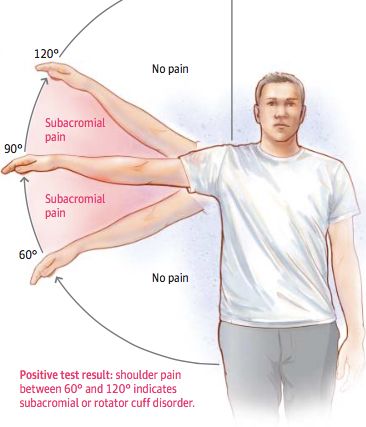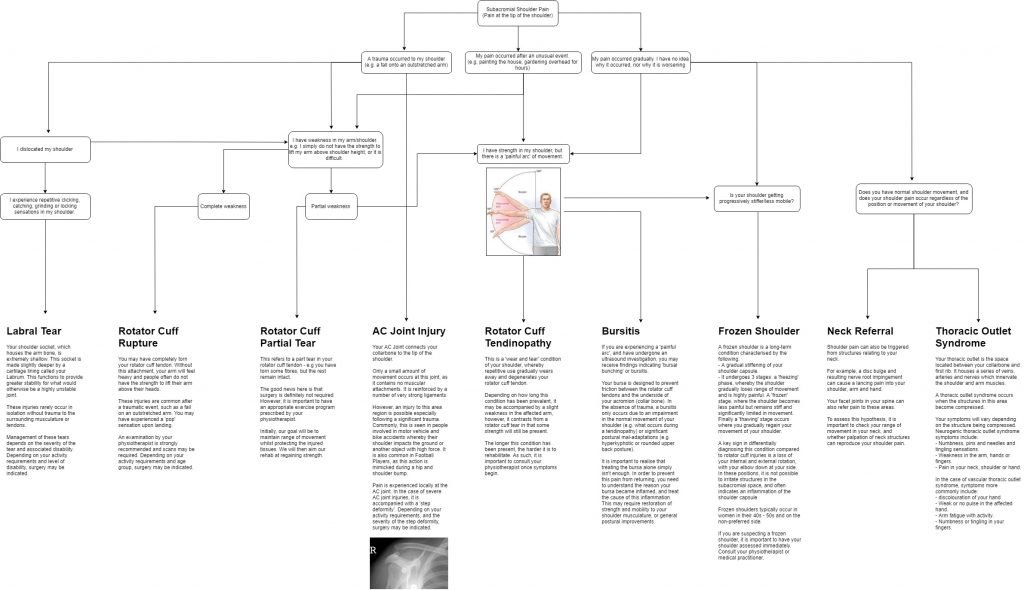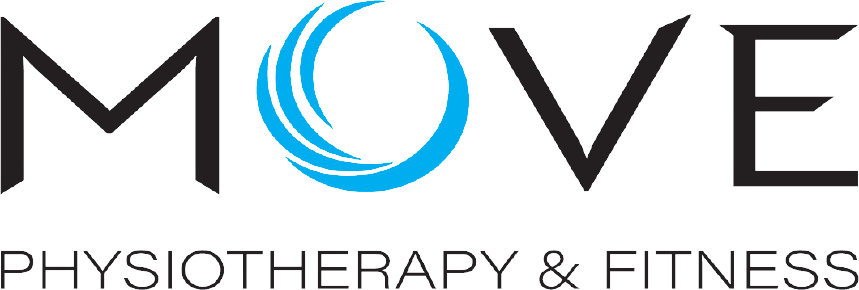Is this the most common cause of shoulder pain? | Move Physiotherapy East Fremantle
Rotator cuff tendinopathies are one of the most common shoulder pain conditions that present to physiotherapy. These injuries are typically your ‘wear and tear’ or overuse injuries, where repetitive shoulder movement, when combined with poor muscular control cause pain and, if left untreated, eventually degeneration in your rotator cuff tendons. Typically, those who are experiencing this type of pain will present with the following symptoms.
1. Pain at the tip of the shoulder. Depending on the severity or chronicity of this condition, it may also refer to other areas such as the side of the arm.
2. There will be a painful arc of movement. Typically people will experience their pain when lifting their arm between 60 and 120 degrees.
 3. Depending on the severity and chronicity of the issue, you may experience pain whilst laying on the affected arm and a deep ache at the shoulder during night time. This may be indicative of a ‘bursitis’ also being present.
3. Depending on the severity and chronicity of the issue, you may experience pain whilst laying on the affected arm and a deep ache at the shoulder during night time. This may be indicative of a ‘bursitis’ also being present.
4. In the case of long standing tendinopathies, there may be a weakness in the affected side.
Assessment of Shoulder Tendinopathies
A rotator cuff tendinopathy can be accurately diagnosed by your physiotherapist. As a part of your examination, your physiotherapist will assess your range movement; looking for typical symptoms such as the ‘arc of pain’ as described above. This information can also rule out other shoulder conditions such as a frozen shoulder.
They will also assess the strength in your shoulder. Weakness in your affected arm may be indicative of a longer term tendinopathy where an amount of degeneration has occurred in the tendon, thereby making it weaker than the unaffected side. Significant weakness may be indicative of other shoulder pathologies such as rotator cuff tears.
NB: We have also created the following ‘flowchart for the self diagnosis for your shoulder pain.’ Click the following link to the article.

The Tendinopathy Pathway
In order to rehabilitate a rotator cuff tendinopathy, it is important to understand the tendinopathy injury process:
Your shoulder tendons are built to withstand two types of load. ‘Tensile load’ refers to the force applied when your muscles/tendons are stretched and contracted. ‘Compressive load’ refers to moments where the tendon is pressed against other structures (e.g. the underlying bones).
When the amount of load applied to the tendon exceeds its normal capacity, this wear and tear condition starts to develop. So for example, if we perform an ongoing repetitive activity, this increased amount of contraction and stretching of the tendons during this activity may exceed its load capacity and trigger a tendinopathy. Or, as another example, some positions increase the amount of compression applied to your shoulder tendons (e.g. overhead movements). So, if we suddenly begin to perform a heap more overhead activities, this ongoing compression may trigger tendon pain.
Of course, it doesn’t take just one incident to trigger a tendinopathy. There must always be a significant amount of repetitive strain before these injuries occur. And the body will give you plenty of warning signs! Tendon pain goes through the following stages:
1. Reactive Tendinopathy: Your first warning sign is what we term a ‘reactive tendinopathy.’ This refers to the stage of the injury where we first start experiencing tendon pain. At this stage, there is very minimal actual damage that has occurred to the tendon itself. But, the body is telling us that something needs to change!
If your tendon pain has come about simply because of a once off, completely out of the ordinary activity, such as painting the house… usually, by taking away the aggravating activity (potentially with some short term physiotherapy/massage/trigger point release), your shoulder pain will resolve within a couple of weeks without any need for further worry!
However, if your tendon pain has come about from your normal day to day activities, or by starting a new activity that isn’t going to change any time soon – for example, your shoulder pain started from painting the house, but you’re going to be painting houses every day for the next year – the earlier you can address this pain, the better.
2. If we start experiencing shoulder tendon pain and simply “push through”, the tendon degeneration process begins. In this second stage of a tendinopathy, a few nasty things start to happen. Firstly, your tendon starts to take on more fluid and it becomes swollen. Your tendon fibres become separated which causes the whole tendon to become weaker (this is when your arm will start feeling weaker!)
Symptomatically, this is when your shoulder begins to have a longer lasting ache following an aggravating activity (e.g. hanging the washing on the line.)
However, the good news, is that these changes are completely reversible. Your rehabilitation from this stage will follow two stages. Firstly, controlling your symptoms to ensure your pain never gets beyond a 4/10 during any activity, or in the 24 hour period following activity. Your physiotherapist will then gradually reintroduce strength into your shoulder.
3. However, if you still continue to push through considerable amounts of pain, irreversible degenerative changes begin to occur in your shoulder. Your shoulder will progressively become weaker, putting it at greater risk for rotator cuff tears and bursitis.
If you have been experiencing chronic shoulder tendon pain ongoingly, it is important to get these issues fixed sooner rather than later.
Tendinopathy Treatments
As briefly mentioned above, the treatment for a rotator cuff has two main goals.
1. Reduce compressive and tensile load through your shoulder.
2. Gradually reintroduce load requirements to your shoulder.
To reduce compressive load, your physiotherapist may employ a range of manual techniques including massage or dry needling. They will also advise you on positions and activities to avoid allowing your shoulder to settle.
They will then gradually reintroduce load and strengthen the structures in and around your shoulder. Commonly, it is necessary to develop core and midback strength, in addition to regaining strength in your rotator cuff. Each rehabilitation protocol is highly specific, and it is important to have exercise tailored for you and your individual injury.
Use the appointment form below to book a consult with a physiotherapist at Move Physiotherapy.
Would you rather have your shoulder assessed and diagnosed by a physiotherapist?
Use the booking form below to book your appointment online.
